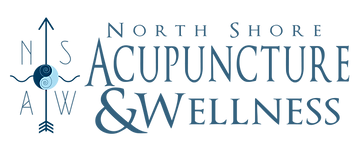What does Spring have to do with Acupuncture?

With the beautiful season changes of New England, we get to experience a broad range of climates throughout any given year. Have you noticed any of these changes reflected in your body? Perhaps you’ve experienced increased fatigue in the winter contrasted with extra energy during the summer? Many of us also get sick more frequently during the winter, or experience itchy eyes in the spring.
The Five Element system of Chinese Medicine, dating back at least 3,000 years, has long explained our bodies’ relationships with the seasons. And now, Western science appears to be catching up! Dopico et al. documented seasonal expression profiles in over 4,000 protein-coding mRNAs. The cellular composition of blood was even found to change with the seasons (2015)!
Spring is associated with the Wood element. Makes sense, right? Spring is a time of growth- green shoots sprouting from the earth, budding trees, and glorious blooms- all expanding outward. Wood can be bent, and can also be straightened. It is known for being solid, and yet workable.
Our internal organs also correspond with the five elements in Chinese Medicine.
The Liver and Gall Bladder are associated with the Wood element. Someone with a Liver imbalance, or even a tendency towards a Liver imbalance, may experience aggravated symptoms in the Spring. Imbalances with the Liver and Wood element are sometimes expressed with anger, and shouting. Sounds like spring fever, right? If you’re feeling a little agitated, try getting some exercise- the increase in blood flow and release of endorphins can help calm that restlessness.
Learn from the Wood element, and focus on your own flexibility and strength this Spring.
Dopico X, Evangelou M, Ferreira R, Guo H, Pekalski M, Smyth D, Cooper N, Burren O, Fulford A, Hennig B, Prentice A, Ziegler A, Bonifacio E, Wallace C, Todd J. Widespread seasonal gene expression reveals annual differences in human immunity and physiology. Nature Communications. 2015; 6(7000).





















